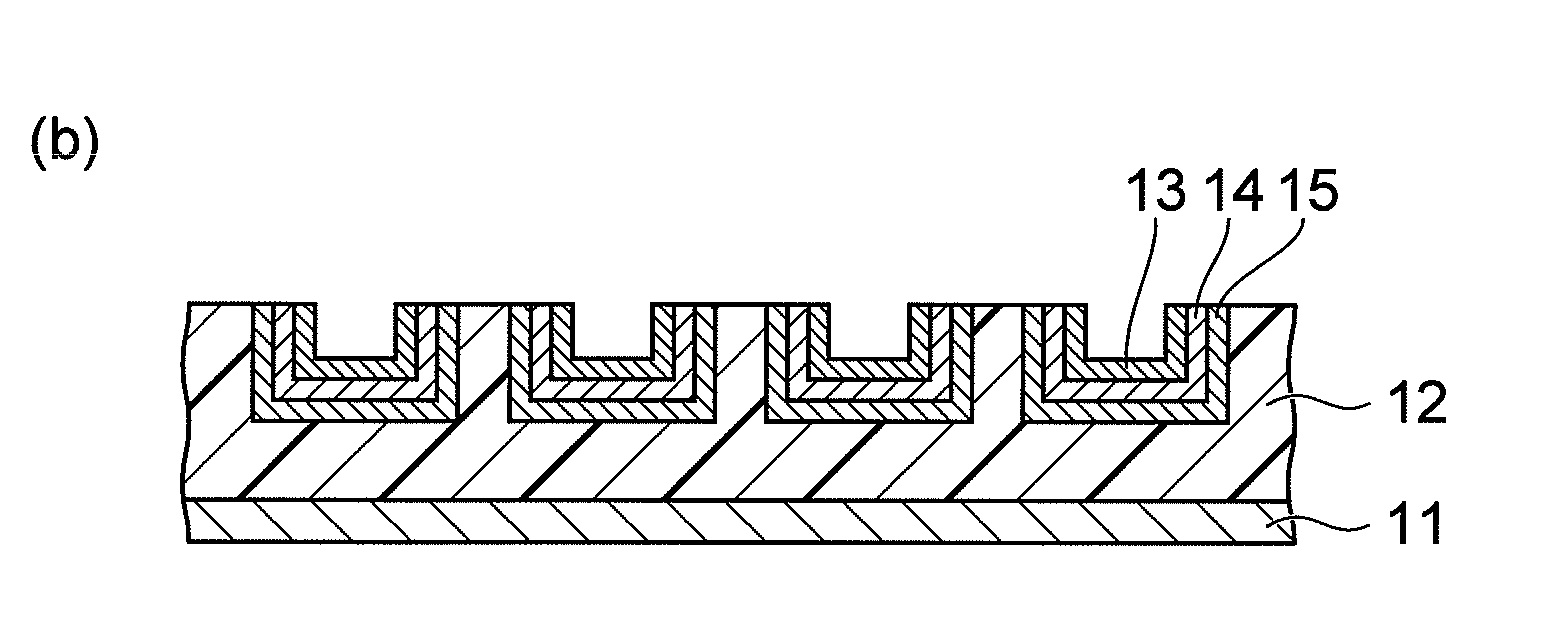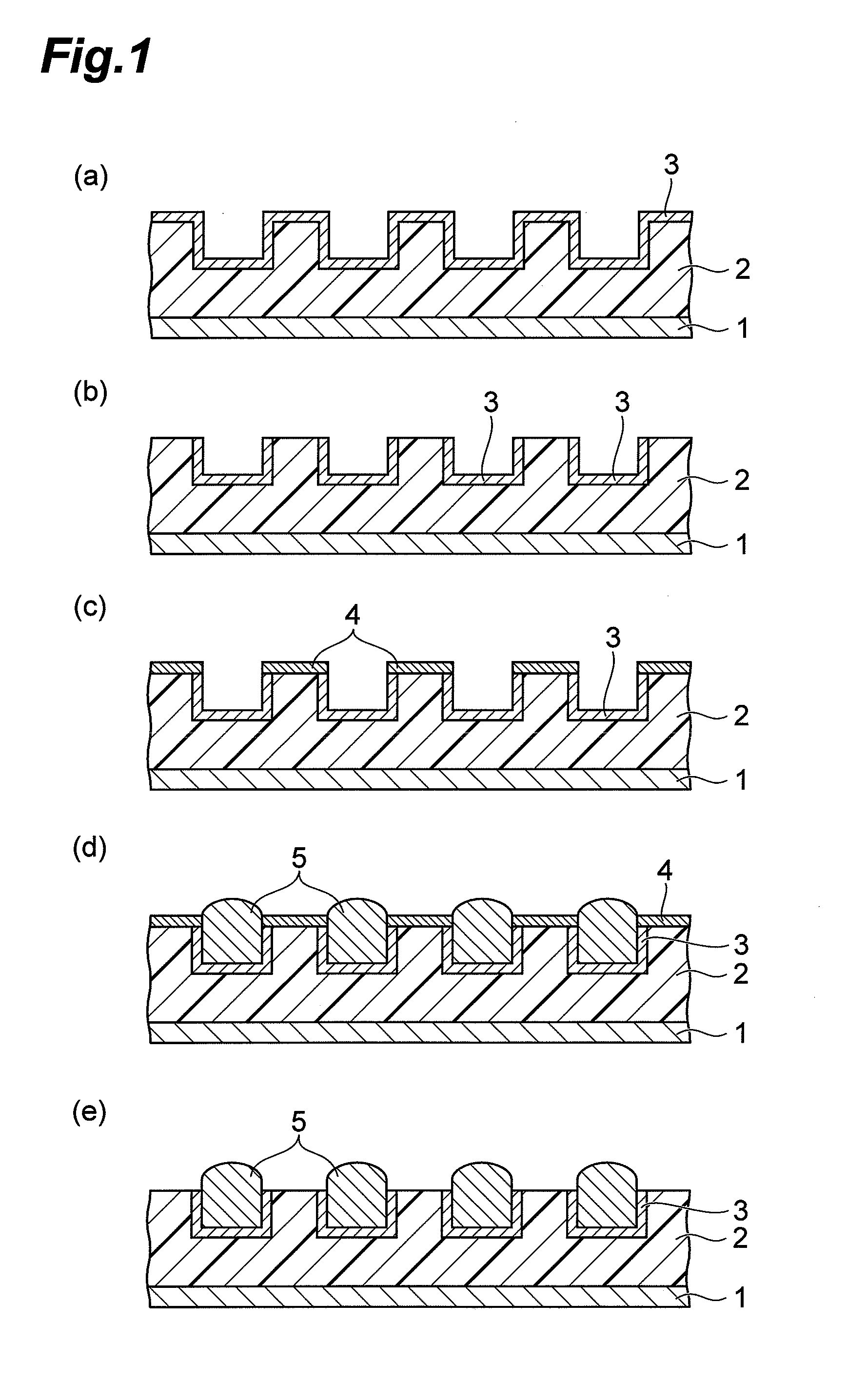CMP Fluid and Method for Polishing Palladium
a technology of polishing liquid and palladium, which is applied in the direction of lapping machines, manufacturing tools, other chemical processes, etc., can solve the problems of wire delay and noise prevention between semiconductor elements and circuit boards, and achieve the effect of increasing the polishing rate of palladium layers and stable polishing ra
- Summary
- Abstract
- Description
- Claims
- Application Information
AI Technical Summary
Benefits of technology
Problems solved by technology
Method used
Image
Examples
first embodiment
[0043]The CMP polishing liquid according to the first embodiment comprises an organic solvent, 1,2,4-triazole, a phosphorus acid compound, an oxidizing agent and an abrasive.
[0044]The CMP polishing liquid comprises an organic solvent. It is presumed that the organic solvent dissolves poorly water-soluble palladium-containing compounds that are generated during polishing and inhibits adhesion of such compounds to the polishing cloth, and thereby inhibits reduction in polishing rate for palladium layer.
[0045]The organic solvent is preferably one that can be optionally mixed with water. Examples of organic solvents include carbonic acid esters, lactones, glycols, glycol derivatives, ethers, alcohols, ketones, carboxylic acid esters and the like.
[0046]Examples of carbonic acid esters include ethylene carbonate, propylene carbonate, dimethyl carbonate, diethyl carbonate and methylethyl carbonate.
[0047]Examples of lactones include butyrolactone and propiolactone.
[0048]Exa...
second embodiment
[0102]The CMP polishing liquid of the second embodiment comprises at least an organic solvent, an organic acid with no primary hydroxyl groups, 1,2,4-triazole, a phosphorus acid compound, an oxidizing agent and an abrasive. The CMP polishing liquid of the second embodiment will be explained only in terms of its differences from the CMP polishing liquid of the first embodiment, without explaining their similarities.
[0103]Since an organic solvent and an organic acid with no primary hydroxyl groups are used in combination in the CMP polishing liquid of the second embodiment, the organic acid coordinates with the palladium ion that is produced by dissolving the poorly water-soluble palladium-containing compound in the organic solvent. This can prevent the reduction of the palladium ion to palladium metal, and can prevent adhesion of the palladium metal onto the polishing cloth. It is thus possible to further inhibit reduction in the polishing rate and accomplish polishing at a stable po...
third embodiment
[0112]The CMP polishing liquid of the third embodiment comprises at least an organic solvent, an amino acid, 1,2,4-triazole, a phosphorus acid compound, an oxidizing agent and an abrasive. The CMP polishing liquid of the third embodiment will be explained only in terms of its differences from the CMP polishing liquids of the first and second embodiments, without explaining their similarities.
[0113]Since an organic solvent and an amino acid are used in combination in the CMP polishing liquid of the third embodiment, the amino acid coordinates with the palladium ion that is produced by dissolving the poorly water-soluble palladium-containing compound in the organic solvent. This can prevent the reduction of the palladium ion to palladium metal, and can prevent adhesion of the palladium metal onto the polishing cloth. It is thus possible to further inhibit reduction in the polishing rate and accomplish polishing at a stable polishing rate, compared to a conventional CMP polishing liqui...
PUM
| Property | Measurement | Unit |
|---|---|---|
| flatness | aaaaa | aaaaa |
| flatness | aaaaa | aaaaa |
| particle size | aaaaa | aaaaa |
Abstract
Description
Claims
Application Information
 Login to View More
Login to View More - R&D
- Intellectual Property
- Life Sciences
- Materials
- Tech Scout
- Unparalleled Data Quality
- Higher Quality Content
- 60% Fewer Hallucinations
Browse by: Latest US Patents, China's latest patents, Technical Efficacy Thesaurus, Application Domain, Technology Topic, Popular Technical Reports.
© 2025 PatSnap. All rights reserved.Legal|Privacy policy|Modern Slavery Act Transparency Statement|Sitemap|About US| Contact US: help@patsnap.com



